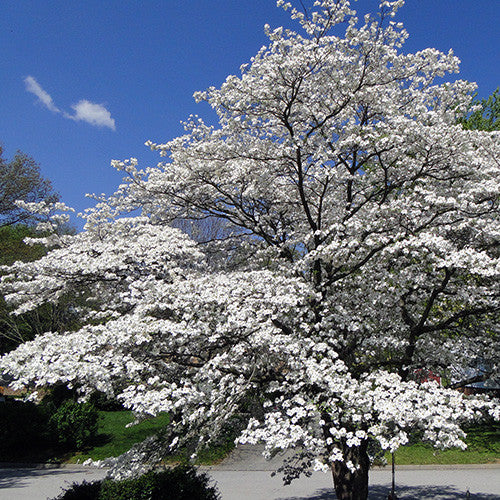

This is a selection of a native North American species. Consider applying a thick mulch around the root zone in winter to protect it in exposed locations or colder microclimates.

It is quite intolerant of urban pollution, therefore inner city or urban streetside plantings are best avoided, and will benefit from being planted in a relatively sheltered location. It is very fussy about its soil conditions and must have rich, acidic soils to ensure success, and is subject to chlorosis (yellowing) of the foliage in alkaline soils. It requires an evenly moist well-drained soil for optimal growth, but will die in standing water. They consist of four narrowly pointed deep rose-red bracts that fade to white in the center.

In spring, profuse star-like blooms usually appear before the leaves. You may want to keep it away from hot, dry locations that receive direct afternoon sun or which get reflected sunlight, such as against the south side of a white wall. Cornus florida Cherokee Brave (Flowering Dogwood) is a large shrub or small deciduous tree adorned with a rounded canopy and elegant horizontal or tiered branches. This tree does best in full sun to partial shade. It grows at a slow rate, and under ideal conditions can be expected to live for approximately 30 years. It has a low canopy with a typical clearance of 4 feet from the ground, and should not be planted underneath power lines. Cherokee Brave Flowering Dogwood will grow to be about 30 feet tall at maturity, with a spread of 35 feet.


 0 kommentar(er)
0 kommentar(er)
